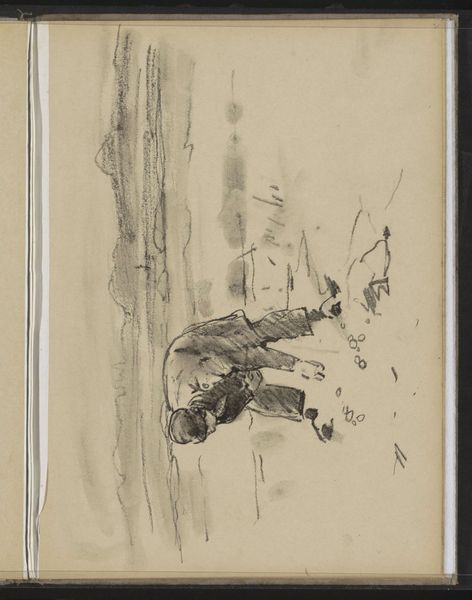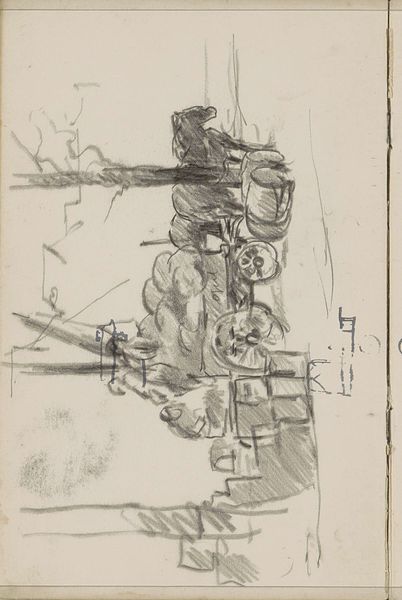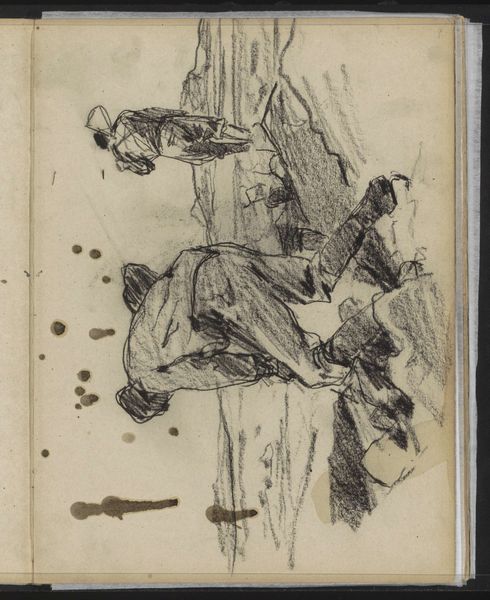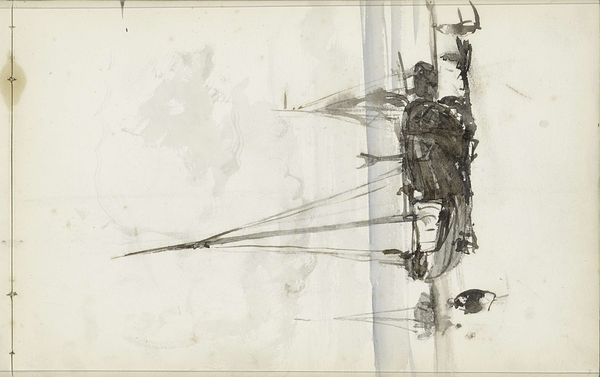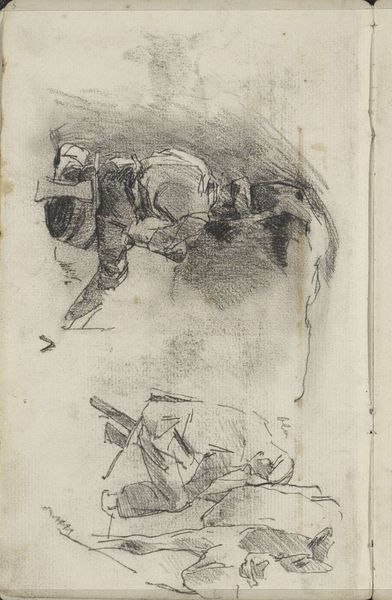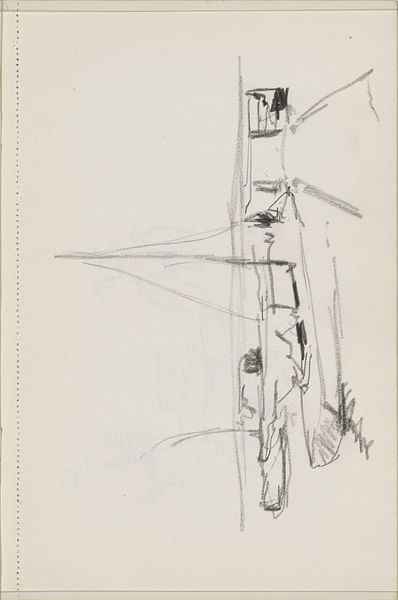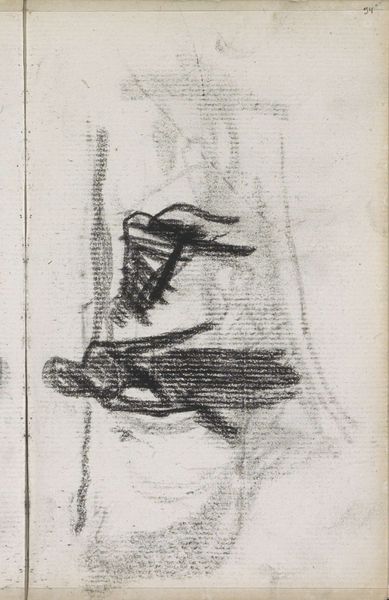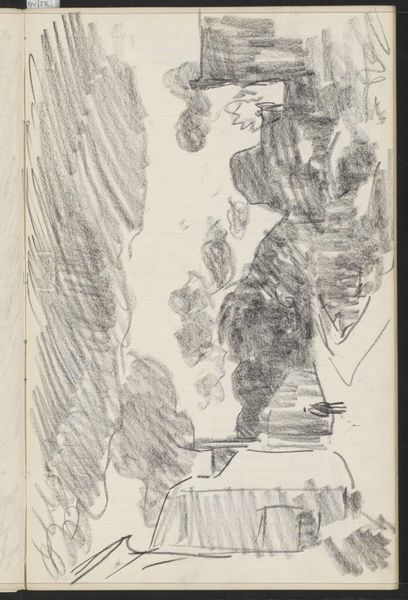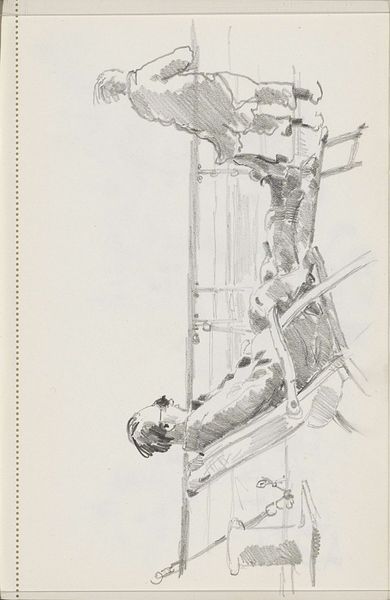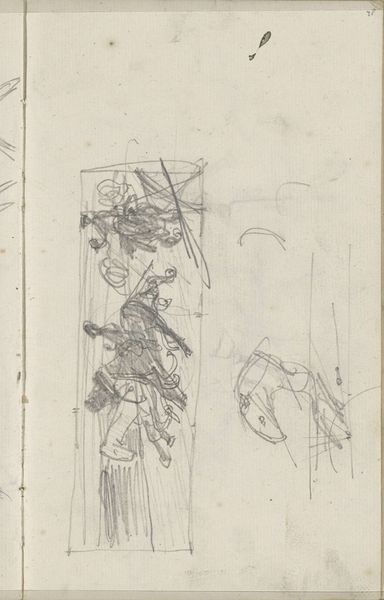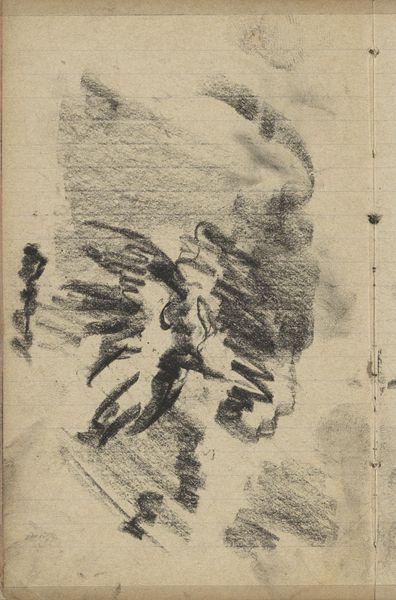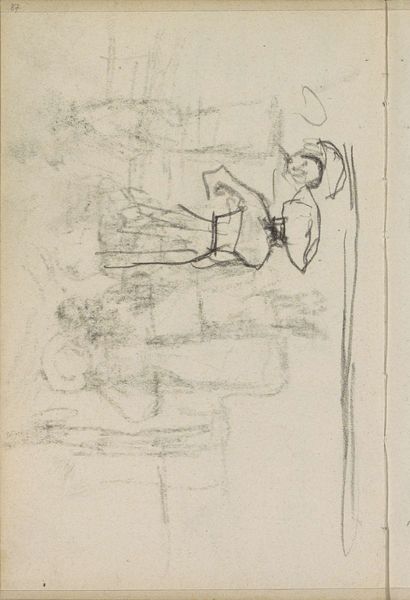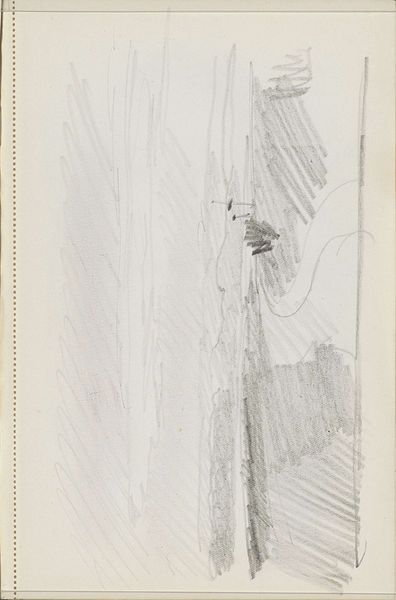
drawing, paper, pencil
#
portrait
#
drawing
#
toned paper
#
quirky sketch
#
sketch book
#
incomplete sketchy
#
paper
#
personal sketchbook
#
sketchwork
#
ink drawing experimentation
#
pen-ink sketch
#
pencil
#
sketchbook drawing
#
genre-painting
#
sketchbook art
#
realism
Copyright: Rijks Museum: Open Domain
Editor: Here we have Cornelis Vreedenburgh’s "Working Man on a Sailing Ship," a drawing done sometime between 1890 and 1946. It looks like it’s from a sketchbook, and the lines are so delicate. What jumps out to me is how simply the artist captures the labor of the man and his interaction with the ship's ropes. How do you interpret this work? Curator: Well, first it is important to see beyond its formal qualities and appreciate it in the context of labor and representation. This image exists in a history of portraying working-class individuals, particularly maritime laborers. I encourage us to consider the identity and status of the worker. To me, there is a tension between romanticizing manual labor and recognizing the potential exploitation within that framework. It raises questions about whose stories are being told and how they're being told, who has access to creating and consuming this type of image, and the potential power dynamics inherent in the act of observation and documentation. What does labor mean during the long time span in which this work was likely made? Editor: That's fascinating. I was so focused on the artistic skill, I didn't really think about the broader implications for the worker. Curator: Exactly! By examining the work through these intersectional lenses – considering class, gender, historical context – we uncover deeper meanings. It prompts a critical dialogue between art history, social history, and contemporary issues of representation and social justice. Editor: I see how shifting the focus opens up new perspectives. Thank you. Curator: It is about learning to see with more politically conscious eyes.
Comments
No comments
Be the first to comment and join the conversation on the ultimate creative platform.
